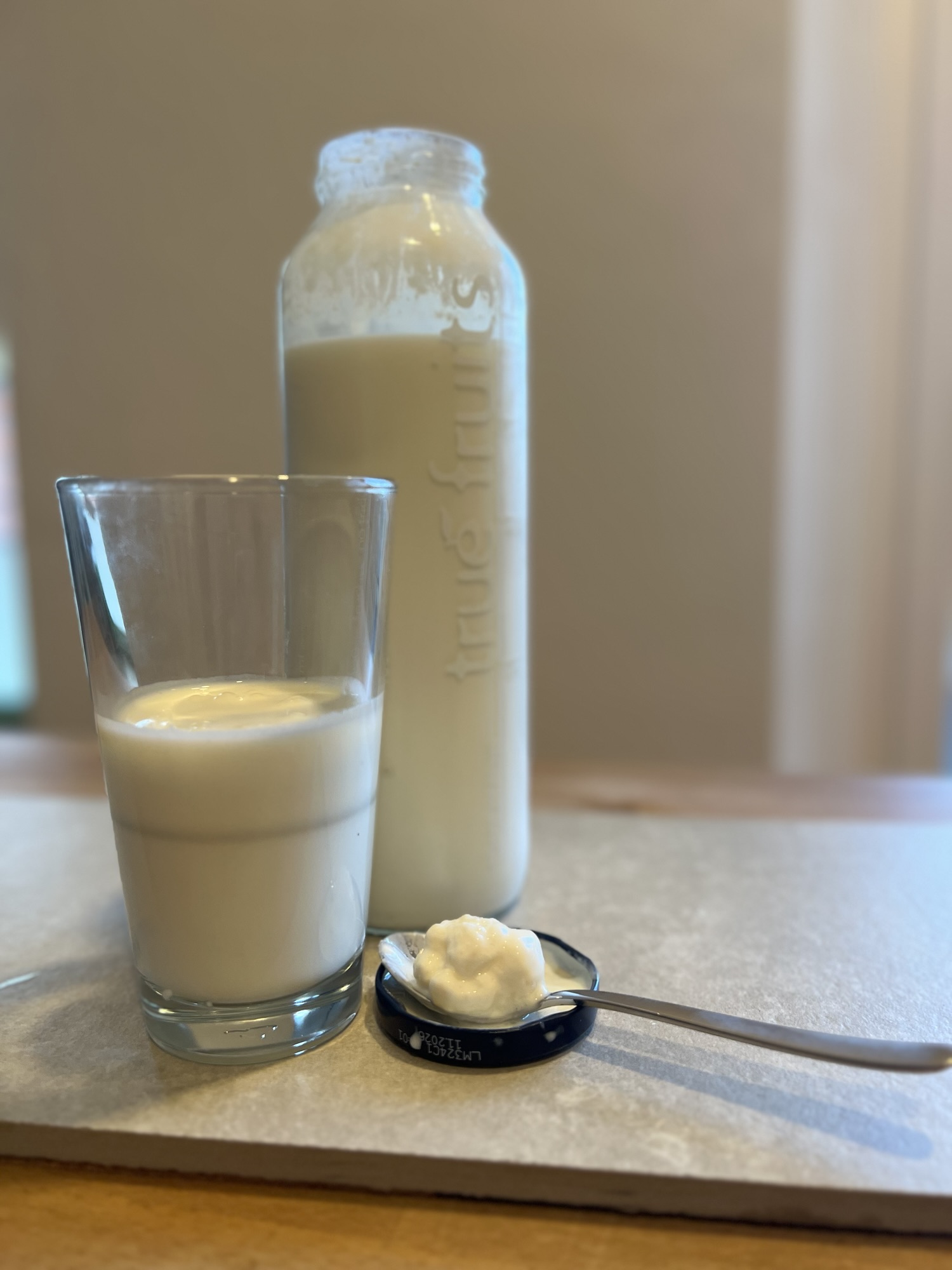Kefir is more than just a drink – it’s a probiotic, slightly fizzy fermented milk with a long tradition. Originally from the Caucasus, Central Asia, and Eastern Europe, it has been a staple food in many cultures for centuries. Today, kefir is enjoyed worldwide, whether plain, as an ingredient in recipes, or as a refreshing smoothie base.
What makes kefir special? It is fermented using kefir grains – a unique symbiosis of yeast and lactic acid bacteria. Fermentation gives it its characteristic taste and may enhance its digestibility.
Why Drink Kefir? The Benefits at a Glance
1. Supports Gut Health
Kefir is rich in probiotic bacteria and yeasts, which may help balance the gut microbiome. A healthy gut is often linked to better digestion and overall well-being.
2. Easier to Digest for People with Lactose Intolerance
During fermentation, most of the lactose is broken down, making kefir more digestible than other dairy products.
3. Natural Balance for Skin and Body
A healthy gut can also have positive effects on the skin. Some people report improvements in their complexion with regular kefir consumption.
4. Culinary Versatility
Whether enjoyed plain, blended with fruit, or used in recipes, kefir is an incredibly versatile ingredient. In Eastern Europe, it’s traditionally consumed on its own, in Turkish cuisine it serves as a base for cold soups, and in North America, it’s a popular smoothie addition.
How to Make Kefir at Home: Easy and Simple
Homemade kefir not only tastes better but also contains more live cultures than most store-bought kefirs.
Ingredients:
- Kefir grains (available in health stores or online).
- Whole milk (plant-based alternatives like coconut milk also work, but ferment differently).
Step-by-Step Instructions:
1. Preparation
- Use a clean jar.
- Add a portion of kefir grains per 500 ml of milk.
2. Fermentation
- Fill the jar with milk.
- Cover loosely (so gases can escape).
- Room temperature (~21°C/70°F): Takes about 24 hours.
- Warmer temperatures: Faster fermentation, stronger flavor.
- Cooler temperatures: Slower fermentation, milder taste.
- Refrigerated fermentation: Possible, but results in a milder and less fizzy kefir.
3. Straining
- Strain kefir grains using a plastic or wooden sieve (avoid metal).
Conclusion: Kefir – Natural, Alive, and Versatile
Kefir is more than just a drink – it’s a traditional food with a long history. If you’ve never made it before, you’ll be surprised how easy and rewarding home fermentation can be.
Give it a try and let us know how your first homemade kefir turned out! 😊
